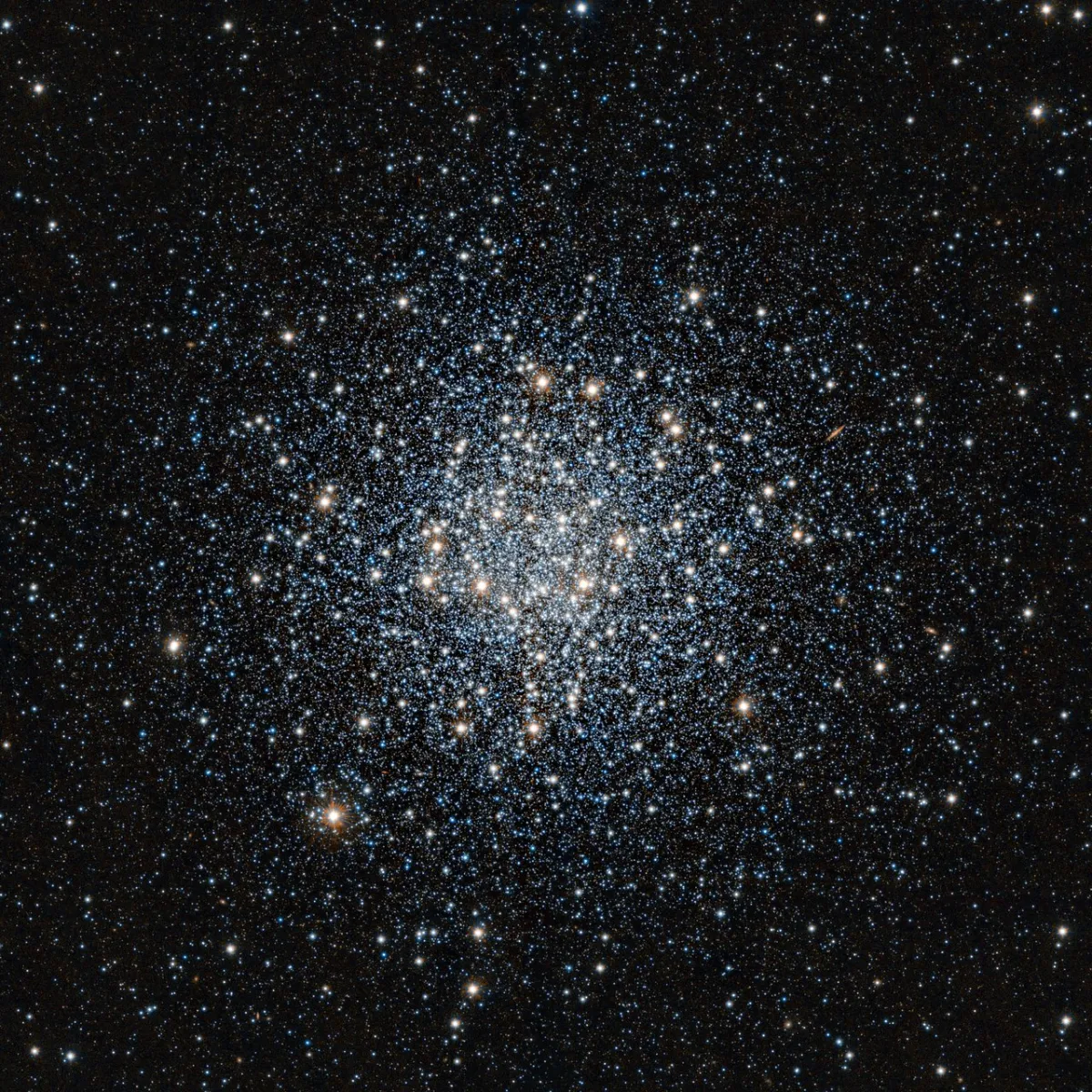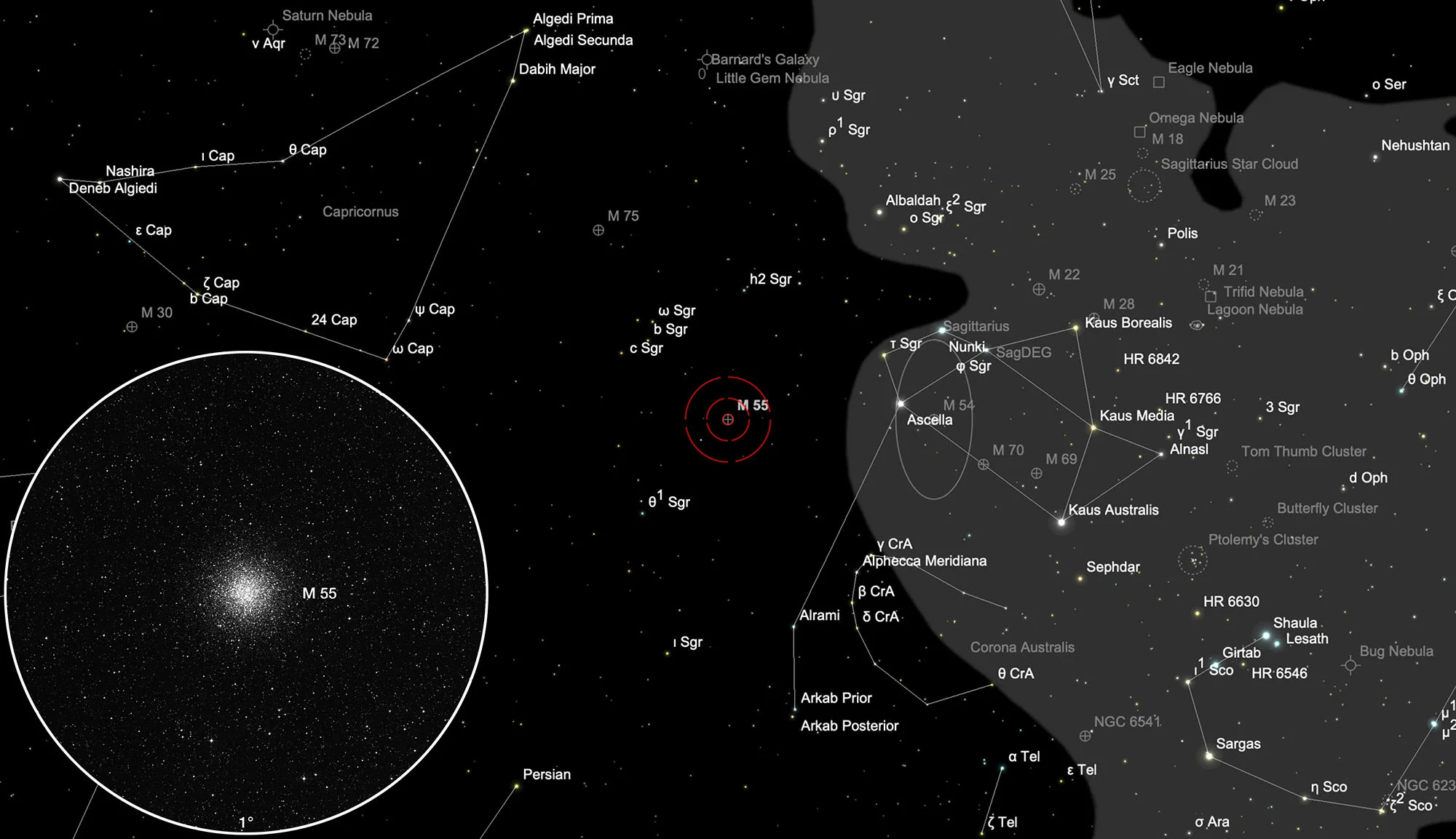Globular Cluster Messier 55

History
M 55 is a large, but rather loose globular cluster. It was discovered by Nicolas Lacaille in 1751 when he was staying at the Cape of Good Hope in South Africa to map the southern starry sky. He described it as the «shadowy nucleus of a large comet». Charles Messier confirmed its existence in the summer of 1778. He noted: «A nebula that is a whitish spot and extends 6' all around. The light is even and does not seem to contain a star.» He seems to have searched for it as early as 1764, without success. The Herschels were able to resolve the globular cluster into single stars with their large reflector telescope. [4]
Physical Properties
The distance from M 55 is about 5.4 kpc (17'600 light years) and it is moving away at 174 km/s. The globular cluster contains around 269'000 times the mass of our sun. [145, 251]
| Designation | NGC 6809 |
| Type | GCL (XI) |
| Right Ascension (J2000.0) | 19h 39m 59.4s |
| Declination (J2000.0) | -30° 57' 42" |
| Diameter | 19 arcmin |
| Visual magnitude | 6.3 mag |
| Metric Distance | 5.400 kpc |
| Dreyer Description | globular, pB, L, R, vRi, vgbM, st 12…15 |
| Identification, Remarks | h 3798; GC 4503; M 55; GCL 113; ESO 460-SC21 |
Finder Chart
M 55 is located in the eastern part of the constellation Sagittarius, about 7° east and slightly south of the star Ascella (ζ Sagittarii). Due to its southern position of -30° declination, it does not come very far over the southern horizon. It is best seen in the months of March to December.
Visual Observation
762 mm Aperture: The globular cluster M55 is similar in size to M13, but much sparser and less densely packed with stars. — 30" f/3.3 SlipStream Dobsonian, Hasliberg, 10. 8. 2024, SQM 21.28, Eduard von Bergen
